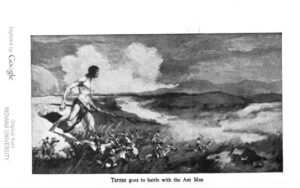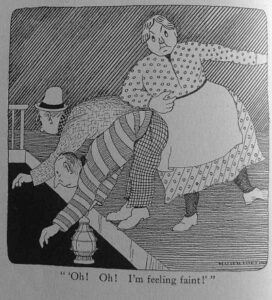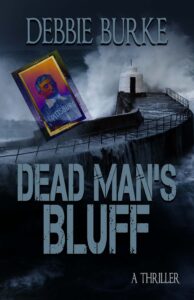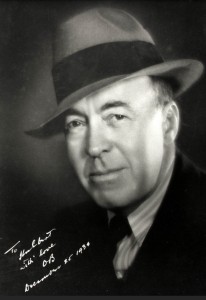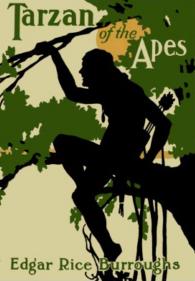By Debbie Burke
Back in January, I tucked this idea in a folder and promptly forgot about it. Just found it. Unlike my memory, however, this information hasn’t expired.
If you’re not familiar with Public Domain Day, January 1 of each year marks the expiration of 95-year-old copyrights of films, songs, and books. As of January 1, 2020, creative works copyrighted in 1924 became free to use by anyone, hence the term “public domain.”
What does that mean?
We the public can now watch Harold Lloyd’s classic silent films like Girl Shy and Hot Water for free.
https://youtu.be/eFHdRkeEnpM
A composer, musician, dancer, or songwriter can now freely use George Gershwin’s classic “Rhapsody in Blue” and incorporate the tune into a new pop song, rap interpretation, music video, reggae routine, or any other variation they please.
Once the copyright expires on books, plays, or movies, anyone is legally allowed to adapt those stories into prequels, sequels, or offshoots; or take characters derived from the original work and feature them in completely new tales. Authors don’t need to pay a fee or obtain permission from a copyright holder to use them.
The Divine Comedy is an epic poem completed in 1320 by Dante Alighieri. The poem was not protected by copyright. Film maker William Fox adapted a portion of that work into Dante’s Inferno, a silent film that was copyrighted in 1924 and is now in the public domain.The story cards at the beginning explain why Fox made the film:
“In presenting in screen form the more striking scenes of “Dante’s Inferno” we are realizing a cherished ambition. After a long period of careful preparation and thought, we decided to interpret reverently this classic masterpiece in its undisguised truth—weaving into its vivid realism the thread of a simple modern story. Thus the warning of Dante is more definitely emphasized—that by our daily thoughts and acts we may be unconsciously building up for our own future—A VERITABLE HELL ON EARTH.
“In the human brain a thin wall divides a heaven and a hell. Are we hewing down that wall? Are we leaving love and sunshine for the crimson realms of agony and remorse?”
The theme of The Inferno clearly resonated with Fox, inspiring him to update the story to his then-contemporary world. In the same way that Fox took an old poem without a copyright and adapted it to a different era, today’s movie makers might use his 1924 film as the basis and inspiration for new creations.
What can writers do with works in the public domain?
We can re-imagine a timeless theme in a new form.
We can take a classic story and play it out in a different setting. Christopher Robin in space? Peter Pan in a post-apocalyptic world?
We can resurrect a beloved or fascinating character to live again in further adventures.
In the 1924 film, Sherlock Jr., Buster Keaton aspires to be a great detective like Sherlock Holmes and embarks on a series of comic, crime-solving adventures. This silent classic showcases Keaton’s incredible versatility as a director, actor, comedian, and super stunt man. Click on this link for 45 minutes of fun.
Other works that came into the public domain last January include:
Tarzan and the Ant Men by Edgar Rice Burroughs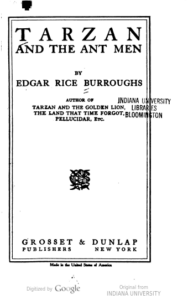
When We Were Very Young by A.A. Milne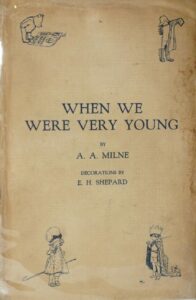
The Magic Mountain by Thomas Mann
The Man in the Brown Suit by Agatha Christie
The first film adaptation of J.M. Barrie’s play, Peter Pan.
Here’s a link to other works that are now in the public domain.
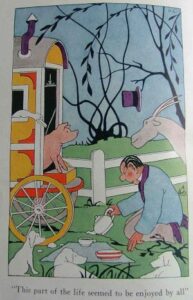 Project Gutenburg makes an extensive collection of public domain works (under Australian copyright laws) available to read for free. As a kid, I was a huge fan of Dr. Doolittle books by Hugh Lofting. After finding the site, I spent an hour happily touring with Dr. Doolittle’s Circus and remembering illustrations I hadn’t seen in 60 years.
Project Gutenburg makes an extensive collection of public domain works (under Australian copyright laws) available to read for free. As a kid, I was a huge fan of Dr. Doolittle books by Hugh Lofting. After finding the site, I spent an hour happily touring with Dr. Doolittle’s Circus and remembering illustrations I hadn’t seen in 60 years.
Today, if I wanted to write a book starring Dr. Doolittle’s sidekick, Matthew Muggs, AKA the Cat’s-Meat-Man, and Mrs. Theodosia Muggs, that is allowable.
It’s not necessary to wait until a work goes into the public domain to use it but you must obtain permission from the copyright holder and/or pay a fee (often hefty). For instance, Desire Under the Elms, the 1924 play by Eugene O’Neill, was adapted into a 1958 movie. At least a portion of the film’s budget went to lawyers negotiating the rights under which O’Neill’s play could become a movie. If producers had waited until 2020, they could have had free, unfettered use of the play. But they’d no longer have the stellar cast from 1958: Sophia Loren, Burl Ives, and Anthony Perkins.
Under earlier copyright law, the term of the copyright for a creative work was 75 years. In 1998, Congress extended the term to 95 years, due in large part to the lobbying of The Walt Disney Company. They wanted longer protection for the ginormous income stream generated by a certain mouse. Under current law, unless another extension is granted, Mickey will enter the public domain in 2024. After that, theoretically, anyone may be able to use Mickey’s image and earn money from it.
Want to bet on that happening?
Nah, me neither.
Works in the public domain can be a source of inspiration for writers to freshen a timeless theme, to create new stories that happen before or after the original work, or to breathe new life into memorable characters.
When Casablanca goes into the public domain in 2037, I’ll write the sequel I’ve had in mind for years…if I’m still around.
Not betting on that either!
~~~
TKZers: Do you ever hanker to write a new episode or sequel to a favorite book or series? Please give examples.
What books or movies do you look forward to being in the public domain?
~~~
Debbie Burke’s latest thriller, Dead Man’s Bluff, will enter the public domain in the year 2115. Or you can buy it now for only $.99.

